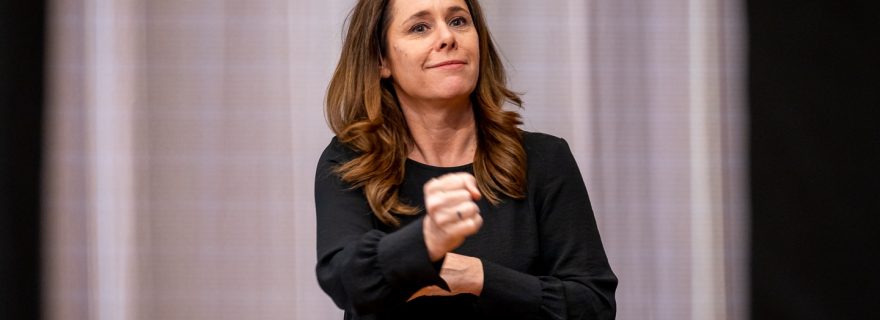Column of the Diversity Officer: Accessibility, online and offline
Accessibility is a basic precondition for being able to take part in university life, conduct research, participate in classes and develop our interests and ambitions. With the current corona measures, the accessibility of our online tools is an important point of attention.
In the last week of February 2021, the Pieter de la Court Building, the Kamerlingh Onnes Building and the University Library will take part in a pilot project, aimed to assess the accessibility of the buildings based on the Dutch certification for accessibility (Nederlands Keurmerk voor Toegankelijkheid). While our buildings are regularly checked for risks and obstacles, this scan allows us to achieve a level of accessibility which goes beyond the basics. We are glad to be able to rely on the expertise of the social enterprise Ongehinderd, which conducts accessibility scans, but also maintains the Ongehinderd app, which provides information on the accessibility of buildings in the Netherlands. You can help by adding information on buildings you use in the app.
What is accessibility about? Accessibility is about much more than a functioning elevator and a wheel-chair accessible bathroom. Accessibility is about the large and small things that enable everyone to take part in the university community. The physical environment should not stand in the way of our access to learning and working opportunities as well as events and social gatherings. It starts with being able to enter a building independently; automatic doors are an important precondition for this. It is also about our place within the building and community: is the accessible route at the back of the building, or can everyone enter through the same door? Can everyone reach for the coffee machine and have a seat at the table in the cafeteria? Is the podium of a lecture hall suitable for a lecturer in a wheelchair? And is it clear from our website where the accessible bathroom is? Obstacles in everyday life which make it difficult to participate chip away at a sense of inclusion and belonging. Everyone benefits from an accessible environment: automatic doors, for example, are not only essential for accessing a building with a wheelchair but benefit everyone by limiting the need to share doorknobs, certainly in times of corona.
Accessibility is also an important point of attention when it comes to online environments and in particular online teaching – details in the design of classes, powerpoints and digital assessments matter (see the guidelines on the remote teaching website). Subtitles, captions, and image descriptions are an important means to make information accessible regardless of hearing and sight. MS Teams does provide captions with high accuracy, but not all online conferencing tools do. Image descriptions in Instagram and other social media ensure the message of an image is received by everyone. Captions are something everyone benefits from: at airports, in noisy places, or when the sound just isn’t perfect, for example.
Accessibility is of course also important for events, online or offline. At our annual symposium on January 22nd and 26th, 2021 we invited sign language translators and gained many important new insights from this encounter. How do you express specific terms in the area of diversity and inclusion in sign language – and what are the debates about terminology when it comes to gestures? Acknowledging and respecting our differences and engaging with difference enriches us all.
Useful links
Stay posted about more updates on our on-going projects in the area of accessibility, diversity and inclusion:


0 Comments